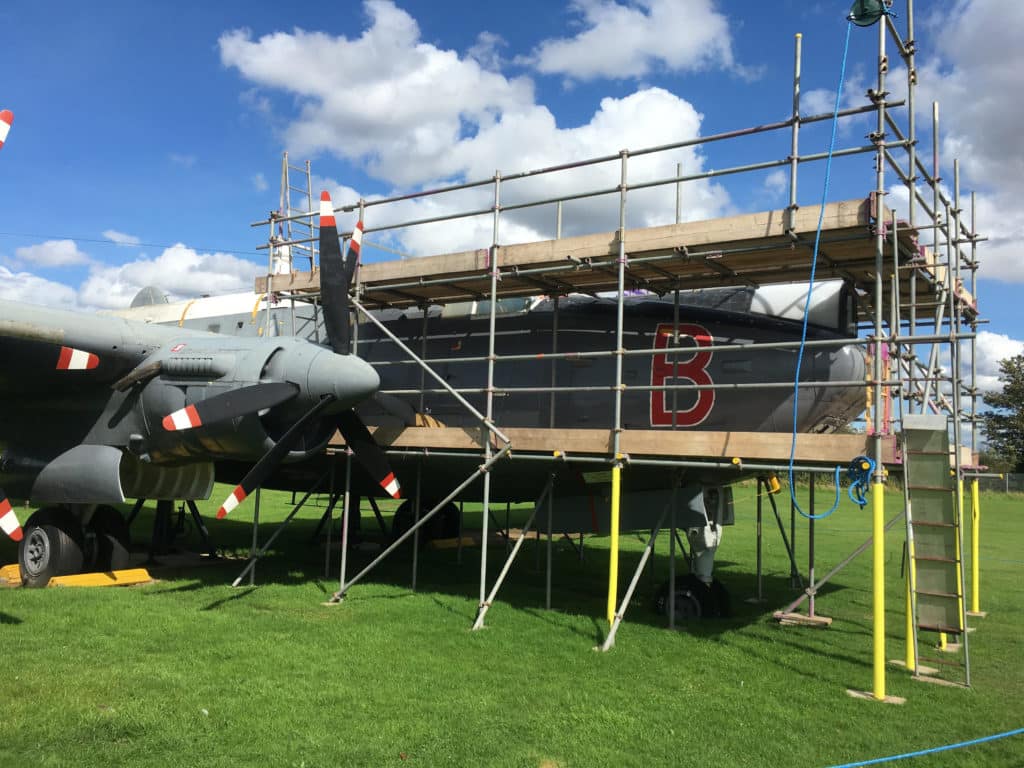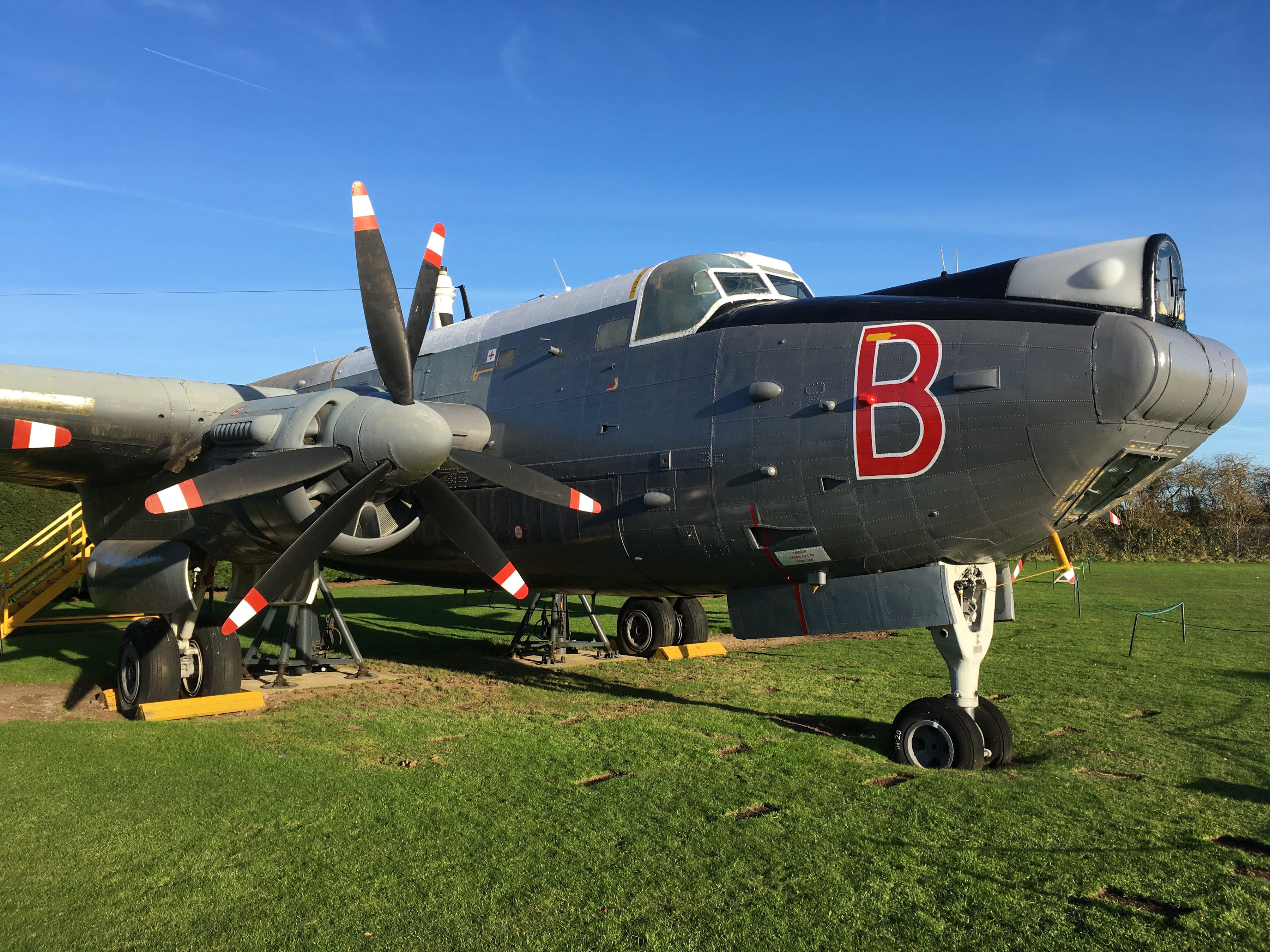Rejuvenating an aviation icon
WR977 was the longest-serving Shackleton Mk.3 in RAF service, which is why it was originally in the collection at RAF Finningley in the UK. It operated Beira patrols during the Rhodesia crisis and was one a pair of Shackletons that found Sir Francis Chichester at the end of his round the world yacht voyage in the 1960s.
Of the 34 Shackleton MR.3s produced, WR977 was constructed very early in the first production batch. It had an active operational life, serving with five different squadrons, and once was the only Mk.3 Phase 3 Shackleton preserved in a private air museum in the UK.
Entering squadron service in 1958 with 220 squadron, by October 1958 it was operating with 201 squadron. From November 1959 to January 1962 WR977 operated with 206 squadron before returning to 201 squadron in April 1963.
In 1966 WR977 was modernised to the improved performance MR.3 Phase 3 variant, returning to operational service with 42 squadron. Further spells with 203, 206 and 42 squadrons from July 1968 to August 1970 preceded WR977’s final squadron service from August 1970 to November 1971 with 203 squadron. WR977 was retired from service to RAF Thorney Island, Hampshire, and was then moved to RAF Finningley, South Yorkshire.
Prior to the Royal Review of the RAF in 1977, the collection of aircraft which had been established at Finningley was dispersed. WR977 was to be scrapped, but Stuart Stephenson, a member of Newark Air Museum, purchased it. A six-week race against time in the spring of 1977 culminated in WR977 being completely dismantled and moved to Newark on seven lorries on 1st May 1977. The members completed re-assembly over the following four weeks.
Whilst on loan at the museum the aircraft had a brief spell in the ownership of the Lincolnshire Lancaster Association, before it was acquired, along with the Avro Vulcan, by the Newark museum in December 2021.

The scaffolding around the nose and forward fuselage of the Newark Air Museum’s Avro Shackleton, WR977
Refurbishment underway
“The museum is a registered charity and its volunteers undertook a complete repaint of Avro Shackleton WR977 in 2016/17,” explains Howard Heeley, Secretary & Museum Trustee. “However, Covid and some structural issues on the aircraft’s main undercarriage legs delayed the most recent repaint until summer/autumn 2023.”
A bespoke scaffolding system was installed to allow teams of volunteers to work on this significant restoration and repainting project in safe conditions. Work included:
- Replacement and re-sealing of the main cockpit glazing
- In-depth cleaning and lichen removal on the upper fuselage surface
- Re-sealing the upper escape hatch just behind the cockpit
- Conservation and painting of this area of the aircraft.
The WR977 remained open during the work period, as part of the museum’s Open Cockpit offer. The modest contributions for accessing this iconic aircraft contributed towards the cost of scaffolding hire, materials and paint/chemicals. The museum is also thankful to those who contributed to the Just Giving Campaign, which is now closed.
“For some of the surface areas, like the fuselage top to the wing leading edges, the museum volunteers worked off a bespoke scaffolding system to undertake a lot of preparation work prior to the repainting,” says Heeley. “Removing lichen and some moss was a big task, for which a proprietary agricultural killer was used, sourced and supplied by one of the volunteers. Prior to full scale application, tests were carried out to ensure that any residues left would not cause issues with paint application.”
Coatings applied
“For the white areas on the top of the forward fuselage, a roller-applied Dulux Professional Gloss paint was used over the top of the corresponding undercoat,” explains Heeley. “However, for the rear fuselage top, volunteers keyed down the old white paint, which was a Witham gloss from 2016, and just applied two gloss coats over the top – again using rollers. Careful attention was paid to only applying paint when the temperature was within an acceptable range.”
He told Protective Coatings Expert: “For the grey on the nose section of the fuselage, up to the leading edge of the wings, the surfaces were thoroughly prepared by sanding, de-corroding and filling. Two coats of Witham WOCO polyurethane BS381c 638 Dark Sea Grey gloss were then applied. Once again this was applied by roller on top of a Witham WOCO one-pack pale grey etch primer.”
Museum volunteers are now working on the fuselage aft of the wing as and when the weather allows. “Some areas have been rubbed down and once again a Witham WOCO one-pack pale grey etch primer will be used,” explains Heeley. “This will be followed by two coats of roller-applied Witham WOCO Polyurethane BS381c 638 Dark Sea Grey gloss.”

The repainted Avro Shackleton, WR977

